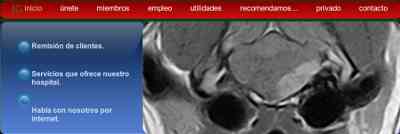As stated before, meningomyelitis appears to be on the rise. Twenty years ago, it was rare
to diagnose meningomyelitis and most of these were secondary to canine distemper virus with the
remainder being due to toxoplasmosis. Today, it is almost impossible to deal with animals with
neck pain and not be suspicious of meningomyelitis. For this reason, even with signs of early
degenerative disc disease, I do not consider surgery until I have ruled-out meningitis.
While some
neurologists are unconcerned about performing myelography on patients who have meningomyelitis,
most contrast agents are inflammatory by nature. In the face on meningomyelitis, myelography can
exacerbate the clinical signs and is, therefore, generally contraindicated in meningomyelitis.
The clinical signs of meningomyelitis are, generally, neck pain and asymmetrical neurologic
deficits.
The deficits depend upon which pathways are involved in the disease process. The signs
are usually progressive, but may develop acutely.
In dogs and cats, the causes of meningomyelitis
are, in order of likelihood, viral, inflammatory, protozoal, fungal, rickettsial and bacterial diseases.
The viral disease most commonly seen in dogs is canine distemper (even in vaccinated dogs). In
cats, feline leukemia virus (FeLV), feline infectious peritonitis (FIP) and feline immunodeficiency
virus (FIV) are the most common viral infections. Toxoplasmosis can occur in both dogs and cats,
while dog also may develop Neospora caninum infections. Aspergillosis is not uncommon in dogs,
while cryptococcosis is more common in cats. Cats do not appear to have rickettsial diseases, but
dogs have been shown to develop meningomyelitis from both ehrlichiosis and Rocky Mountain
spotted fever. Titers for these agents should be performed on the serum and/or CSF when presented
with meningomyelitis.
The diagnosis is made on CSF tap and analysis. Generally, we approach animals with neck
pain and quadriparesis by performing a minimum data base including a CBC, chemistry profile,
urinalysis and appropriate radiographs. With the CBC, we run plasma fibrinogen levels. This is a
crude estimate of systemic inflammation, but a valuable tool in assessing the potential for
meningomyelitis. It may be the only abnormality noted in the CBC. Once the minimal data base
is evaluated, we proceed with anesthesia and CSF tap. While this is being processed, spinal
radiographs are taken. If the CSF indicates inflammation by increase in cells and protein and the
survey radiographs do not demonstrate significant findings, we then treat the inflammation rather
than proceed with myelography. Based upon the response to therapy, we reassess the need for
further tests. CSF titers are submitted for the relevant infectious agents providing confirmation of
the specific disease causing organism. In those cases where a specific disease causing organism can
be found, the treatment is adjusted appropriately.
When no organism is found, the tentative
diagnosis of inflammatory meningomyelitis is made. Many newer forms of meningomyelitis are
now recognized including steroid-responsive meningomyelitis. This is usually associated with an
increase in blood vessel fragility and may lead to an apparently blood-contaminated CSF tap. On
examination, however, there is a marked increase in non-degenerative neutrophils in the CSF.
As in beagles with necrotizing vasculitis (beagle neck pain syndrome), many of patients with
steroid-responsive meningomyelitis have elevations in alpha 2 globulins on serum electrophoresis.
Steroid-responsive meningomyelitis probably represents a form of vasculitis which results in
inflammation in the CNS. Conventional therapy with corticosteroids will not always resolve this
condition, since steroids only suppress the symptoms of the disease. Although some dogs recover
from this disease following corticosteroid management, many would probably benefit from
alternative therapy. Conventional therapy involves giving prednisolone at 1 mg/kg/day in three
divided doses. Once the signs resolve (usually within 72 hours), the dosage is reduced to twice a
day. This is further reduced to daily medication in the morning and, finally, to alternate day therapy.
We find that many patients will benefit from anti-oxidant therapy, including vitamin E, vitamin C
and selenium. Additional medications of benefit include omega-3-fatty acids, ginkgo biloba extract
and green tea. When pain is present, garlic, ginger and feverfew may help reduce the inflammation
without causing additional gastrointestinal signs. Some patients will be relieved by the alternative
medication, reducing or replacing the corticosteroid. |


 miles de casos clûÙnicos
miles de casos clûÙnicos












